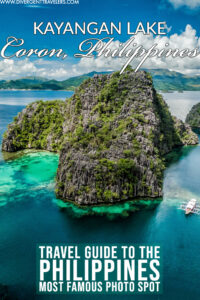Kayangan Lake is one of the most incredible destinations in the Philippines because few other natural attractions can match this one when it comes to raw beauty.
A visit to Kayangan Lake is often the highlight of a trip to Coron because the dramatic limestone cliffs and the verdant, refreshing freshwater of the lake are unbeatable.
Gaze out over Coron Bay as small Banca boats drop off tourists, take a refreshing dip in Kayangan Lake and island-hop your way around the rest of Coron.
This is one of the most photogenic spots in the country, and to inspire your trip, here’s our guide to exploring Kayangan Lake.
Don’t leave home without: Lonely Planet Philippines (Country Guide)
Everything You Need to Know About Kayangan Lake
Table of Contents
Where is Kayangan Lake?
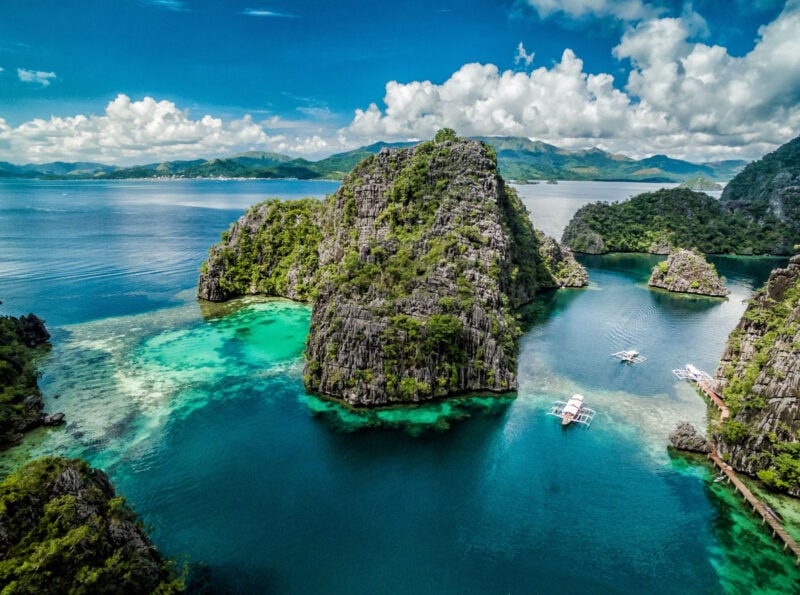
When you’re planning a trip to Palawan and Coron, then it’s likely that the pictures you’ll be seeing in your research will be of Kayangan Lake, or rather of the bay that forms the entrance to the lake itself.
Kayangan Lake is located within the area that tourists know as Coron, and the lake is one of the main attractions on Coron Island.
The actual area is officially known as the Calamianes Islands, and there are hundreds more islands and lakes to be found across the archipelago.
The Calamianes Islands are part of Palawan Province and are located roughly halfway between Puerto Princesa, Palawan’s main city, and Manila, the Filipino capital.
The entrance to Kayangan Lake, on Coron Island, is called Coron Bay, but don’t get this confused with Coron Town.
Coron Town is the main tourist hub in the Calamianes Islands, and it’s actually found on Busuanga Island, the largest island in the chain.
Coron Town is where you’re likely to find yourself staying during your adventures around the area.
History of Kayangan Lake
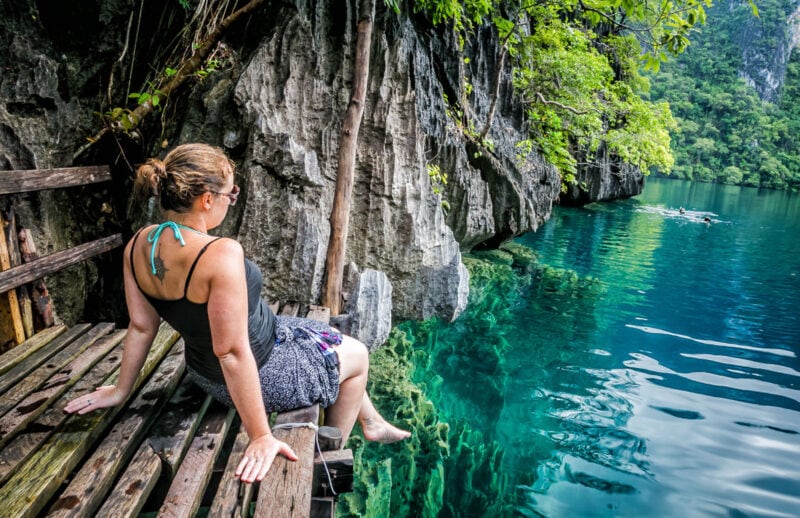
Kayangan Lake is the ancestral domain of the indigenous Tagbanua people who call Coron home.
It’s important to note that the lake has a long history of local lore and tradition behind it, and increasing tourist numbers have seen the boundaries between the Tagbanua and tourists pushed to the limits.
The Tagbanua are the original inhabitants of Coron, a community descended from the Tabon culture which is seen as the first modern human culture to arrive in the Philippines.
Tagbanua traditions mean that they see themselves as caretakers of their sacred land, including the lakes, as well as guardians of the visitors who come here.
Ancient traditions hold that the lakes on Coron Island, of which Kayangan is but one that’s open to tourists, are home to nature spirits. This includes the riveting myth of a giant octopus creature that defends the land of the Tagbanua.
For much of their history, the Tagbanua were on the fringes of the Filipino world, but recent centuries saw incursions by the Spanish, then the Japanese.
The Japanese used the area as a naval base during World War II, and many of the ships were sunk by the Americans, and are now used as dive sites.
Modern history includes mass migration from other islands in the Philippines and increasing tourism.
The Tagbanua fought in the high courts to have their land recognized as an ancestral domain in the late 1990s.
How to get to Kayangan Lake?
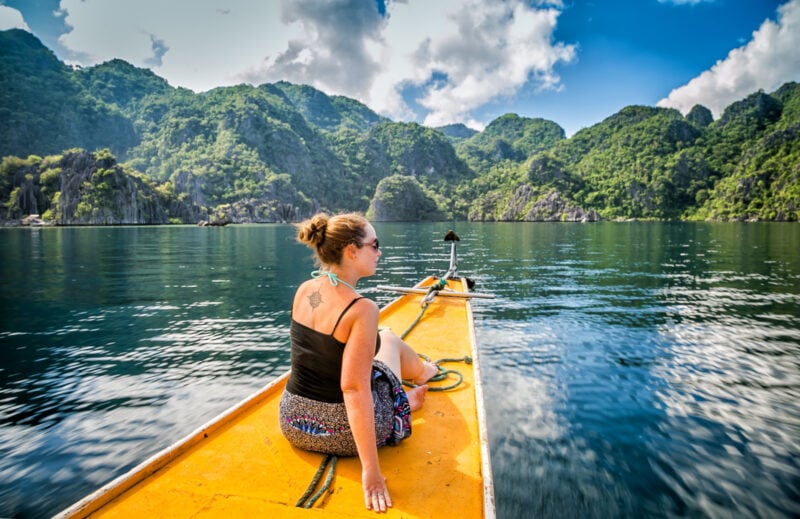
Kayangan Lake is getting easier and easier to get to, but remember that the only way to actually travel here is by boat.
Boat tours leave from Coron Town, which is around one hour away, depending on the speed of the boat and the weather conditions. If it’s bad weather, trips can be canceled.
You can hire a boat just to take you to Kayangan Lake, but you won’t need more than an hour or so to enjoy the place.
It’s much better value and much more time-efficient if you join an island hopping tour that includes Kayangan Lake on the itinerary.
That way you’ll get a whole day out and will enjoy many other nearby sights such as Twin Lagoons and Barracuda Lake.
To get to Coron Town, the quickest option is to fly to Busuanga Airport. There are regular flights here from Manila, Cebu, and Puerto Princesa.
More destinations are added each year too. From the airport, you can take a shuttle bus to Coron Town.
Alternatively, you can take the much slower overnight ferry from Manila, although you’ll need a loose schedule as departure dates can be erratic.
Another great option is the boat route to El Nido, Palawan’s most popular destination.
There are slow ferries taking 8 hours or more and faster boats taking 3 to 4 hours. If you’re really adventurous, you can even join a multi-day island-hopping expedition between Coron and El Nido.
Best Things to do at Kayangan Lake
Snorkel in Kayangan Lake
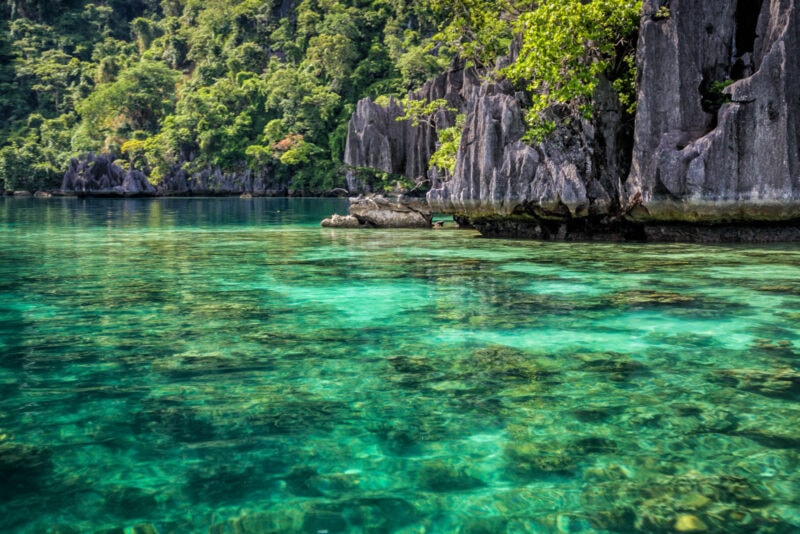
Kayangan Lake is the reason you’re here, and it’s a truly incredible sight to see. This isn’t the largest lake on Coron Island, but it is the largest lake that the indigenous Tagbanua has opened up to tourism.
The lake is a freshwater lake, one that’s held sacred in local traditions, but one that’s refreshingly glorious to swim in when you’re island hopping under the fierce Coron sun.
There are wooden walkways leading along the limestone cliffs, and you can jump into the blue water, explore a few hidden caves in the rocks, or just bask in the sunlight.
Try and get here early in the morning because by midday the lake is rammed with tour groups, especially in peak season.
If you’re looking for the best pictures you’re not going to get them later on in the day, as there will be too many orange life jackets in the photo!
Experience Coron’s pristine beaches and clear waters on an island-hopping cruise, complete with buffet lunch, a guide, and door-to-door round-trip transfers from town hotels.
Climb to the crystal waters of Kayangan Lake, swim in Twin Lagoon, snorkel Skeleton Wreck, and explore Siete Pecados.
Catch some rays on the beach, and savor lunch on Beach 91. The package includes kayaking, with snorkel gear available to rent.
Explore Coron Bay
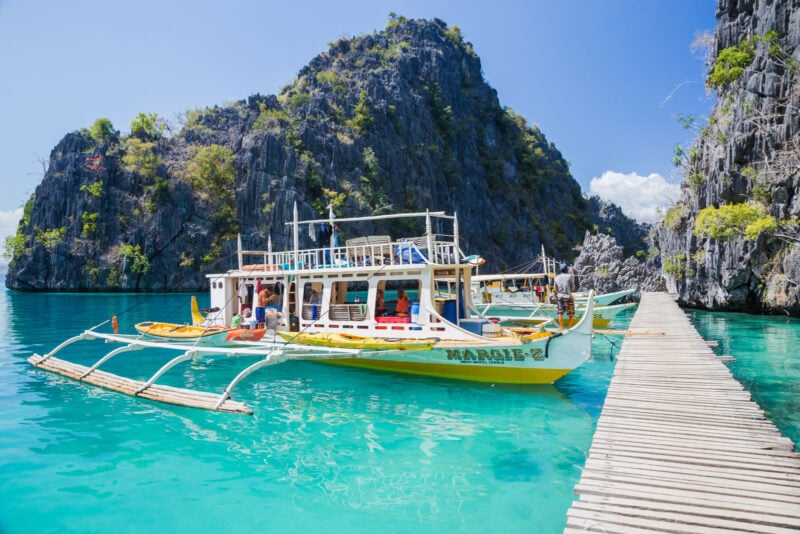
To get to Kayangan Lake, you’ll have to first pass through Coron Bay. The lake is actually hidden away behind the limestone cliffs that rise dramatically from the water, while the boats are parked in the bay beneath the cliffs.
Wooden walkways run along the edge of the water and lead to the entrance of the lake itself.
The views from the boat on the way in and from the walkways are stunning, as this is quintessential Coron.
Coron Bay Viewpoint
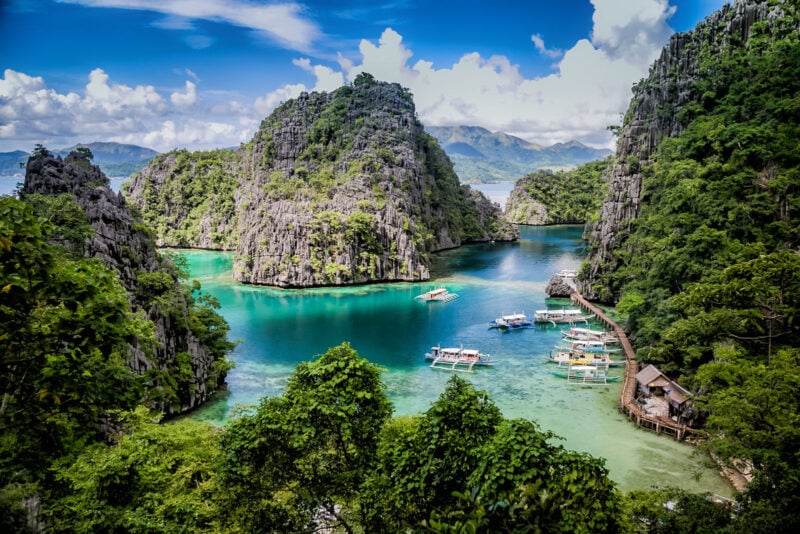
The most well-known picture of Kayangan Lake and Coron is actually of Coron Bay. To reach Kayangan Lake, you need to walk up a set of steep steps leading over the limestone cliffs.
When you get to the top of the steps, there’s a small viewing area where you’ll see people queuing for photographs.
This is the Coron Bay Viewpoint and it’s worth waiting in line for the most epic picture of Coron.
Visit the Twin Lagoons
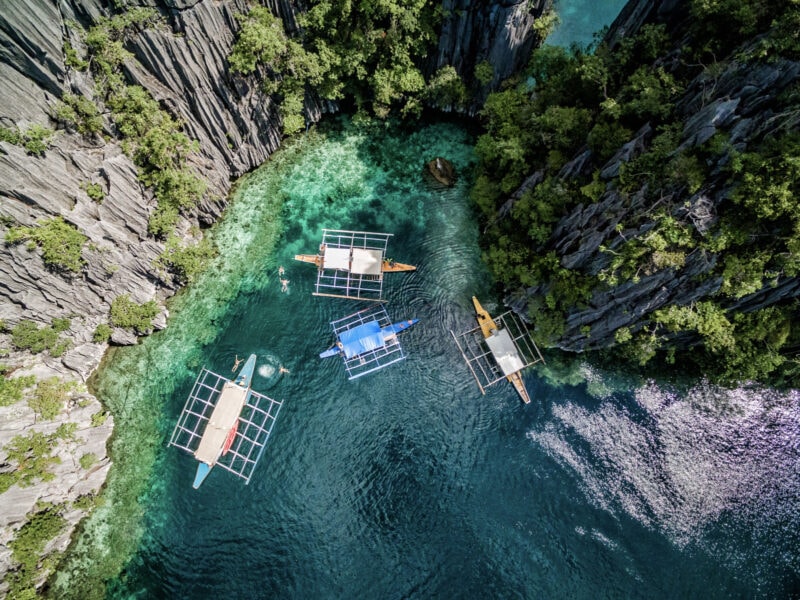
Once you’ve explored Kayangan Lake and swum in the refreshing water, then it’s time to explore more of the nearby area.
A great stop on island hopping Itineraries is Twin Lagoons. Here you’ll find two Lagoons, one freshwater, and one saltwater, divided by a towering limestone karst rock.
You can swim between the two Lagoons, as there’s a jagged entranceway between the two areas.
After parking the boat you take a short hike up the stairs to the viewpoint before clambering down the other side to reach the famous Kayangan Lake on this full-day group tour.
After exploring the lake you will continue on to Twin Lagoon to soak in their crystal clear waters.
Go to Barracuda Lake
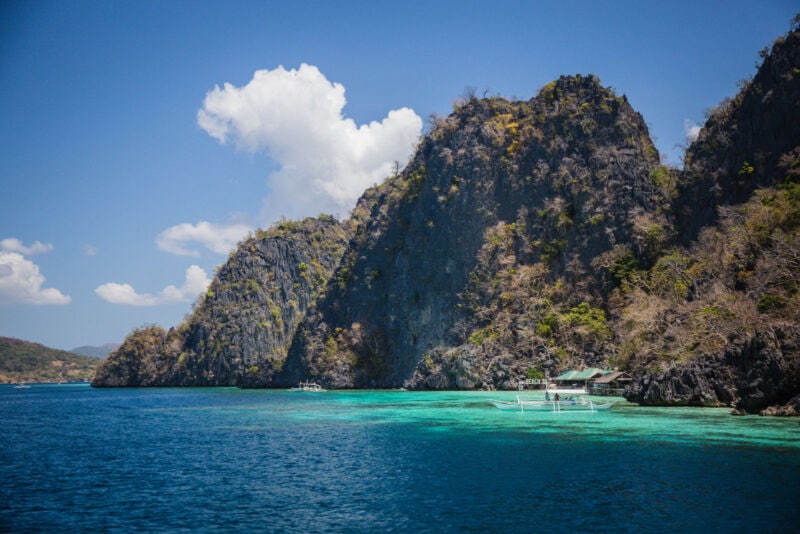
Another of the great lakes that you can visit on your trip to Kayangan Lake, is Barracuda Lake.
This is another unique freshwater lake, and it’s often claimed that it’s the cleanest water in Coron. You can dive down to experience intense thermoclines, where hot and cold water collides.
There aren’t any Barracuda in the lake, but that doesn’t take anything away from the natural beauty of the place.
Snorkel on the Nearby Japanese Shipwreck
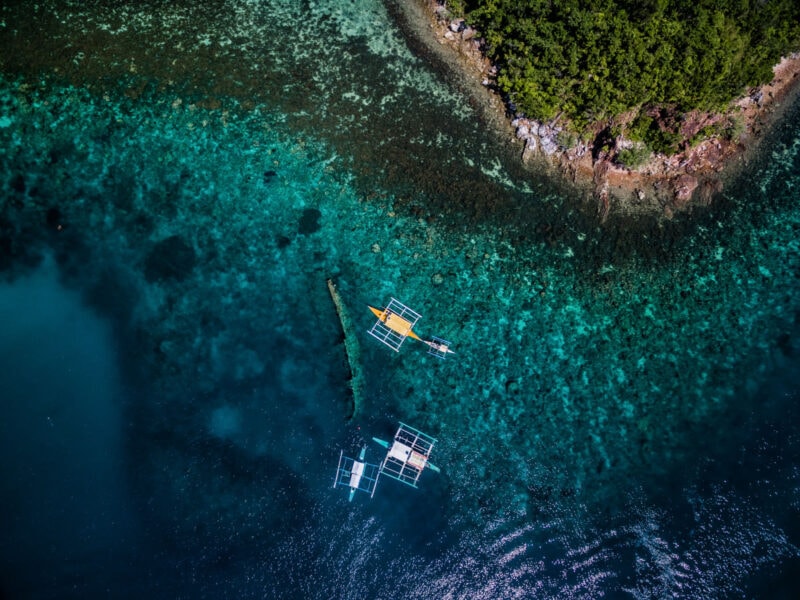
The Coron area is teeming with shipwrecks, many of them dating back to World War II when a Japanese fleet was sunk by the Americans.
Close to Kayangan Lake, you can find the Japanese Shipwreck, a small shipwreck that is found just a few meters below the surface.
This shipwreck is perfect for snorkeling and freediving because with a deep breath, you can swim down from the surface to the ship itself.
Planning Your Visit to Kayangan Lake
Safety in Kayangan Lake
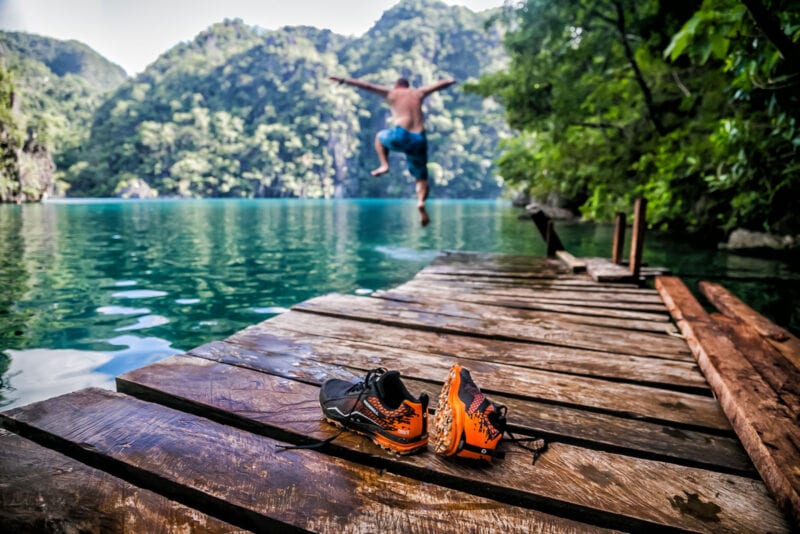
Kayangan Lake and the wider Coron area are very safe destinations. While you are out island hopping, keep an eye on any valuables of course, but don’t worry too much.
At Kayangan Lake it’s now compulsory to wear a life jacket. It’s not dangerous if you know how to swim, but there have been fatalities in the past, usually involving drunk tourists.
To ensure your own safety, follow all of the rules and regulations. Listen to your guides about what you can and cannot do.
Tours and Transport
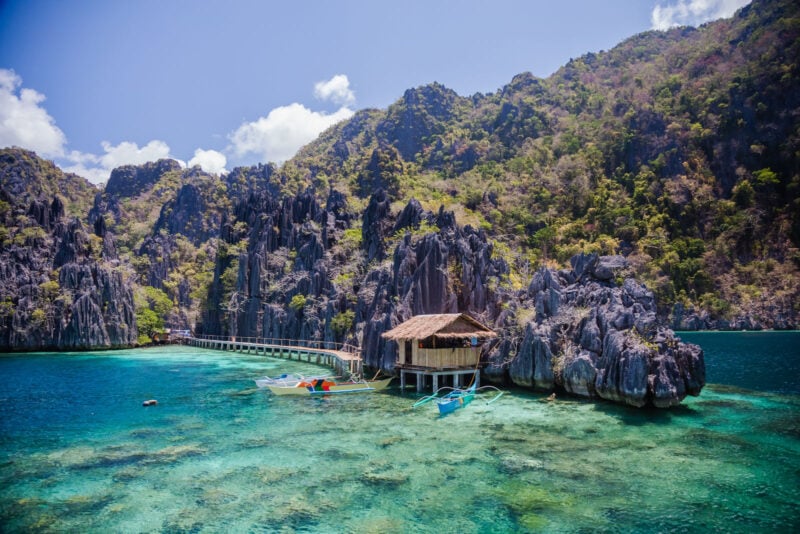
The only way to get to Kayangan Lake is by boat, and you can organize island hopping tours in Coron Town.
Prices are fairly set but they may vary depending on inclusions, except water and lunch as a minimum.
Lunch is usually served Boodle Fight Style on a beach, and the fresh seafood is always a highlight of the day out.
ATMs and Cash
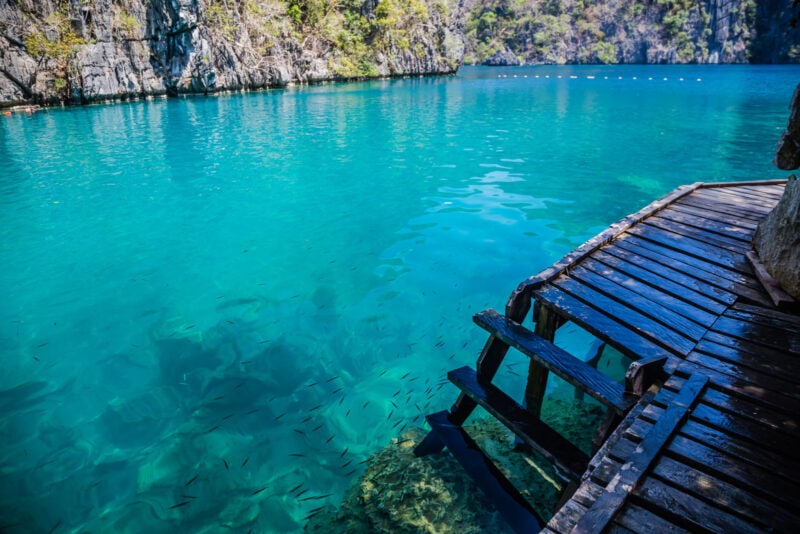
Bring some cash with you on the tour, as you can buy refreshments and snacks at the entrance to Kayangan Lake.
You might also need to pay extra for environmental fees, check with the boat company beforehand. ATMs are only found in Coron Town.
Wifi
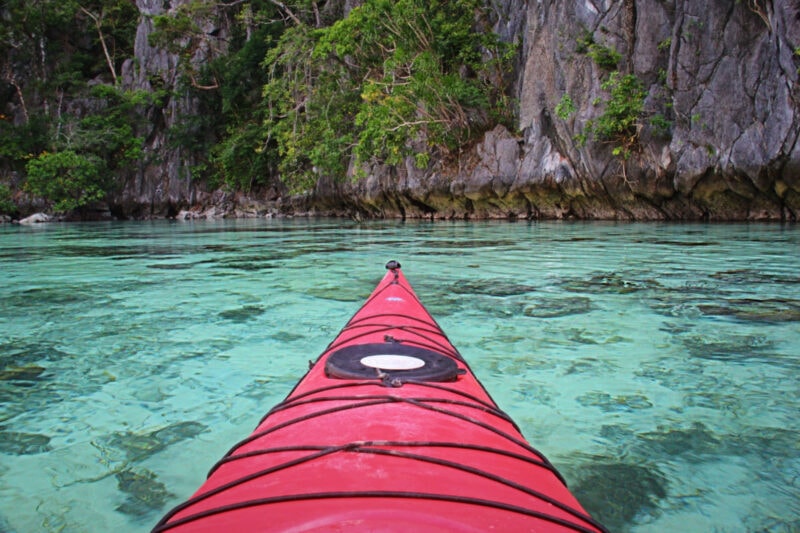
There’s no WiFi at Kayangan Lake, but if you desperately need to stay connected or to post those Instagram shots then pick up a local sim card.
Flights
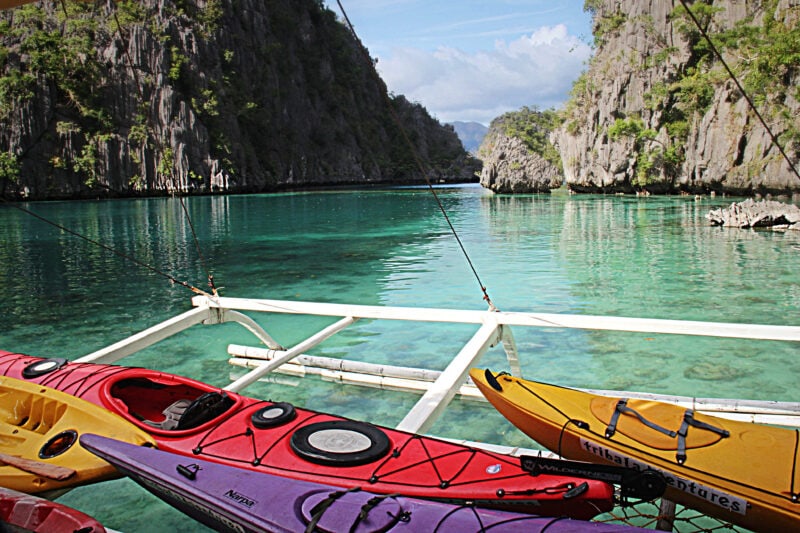
Remember that flights to Coron are actually to Busuanga Airport, and the airport code is USU.
Most visitors to this area stay in Coron Town, on Busuanga Island, and then book day trips to explore Coron Island. It is also possible to include visits to many other islands in the area too.
You might also like:
- 30 Must-Visit Tourist Spots in the Philippines
- 36 Philippines Photos To Inspire Your Next Vacation
- Ultimate Puerto Galera, Philippines Guide
- Busuanga Palawan: Ultimate Guide to the Philippine’s Last Frontier
- Finding a Piece of Africa on Calauit Island, Philippines
Did you like this story? Share it!
